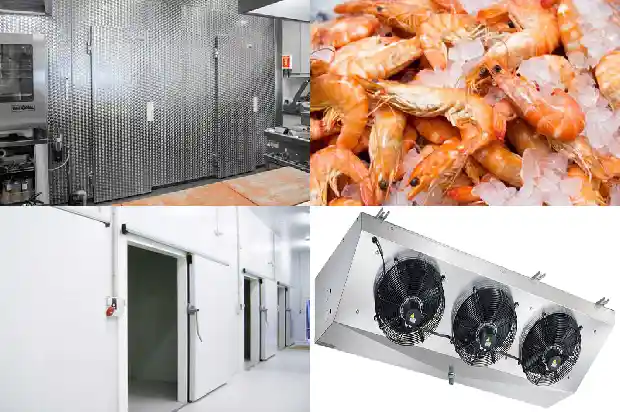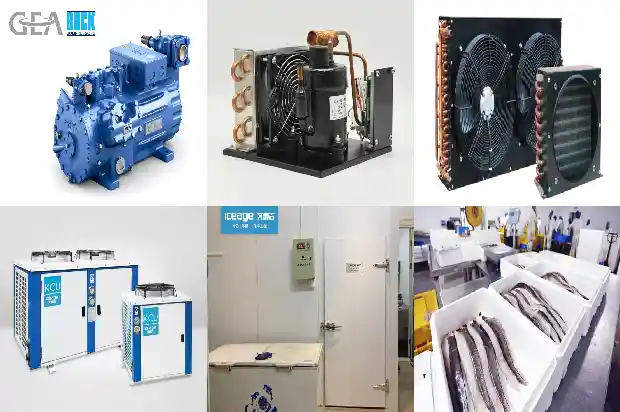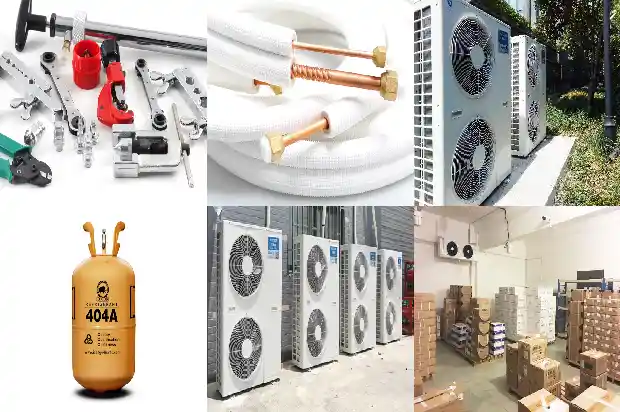Common Pressure Valves and Protection Devices in Refrigeration Units
2025-02-17
- Function of the Evaporating Pressure Regulating Valve
The evaporating pressure regulating valve is generally used in a refrigeration system with one - machine - multi - storehouse, where one refrigeration compressor is responsible for cooling both high - temperature cold storage and low - temperature cold storage. The evaporating pressure regulating valve is usually installed on the outlet pipes of the evaporators in high - and low - temperature cold storages to maintain the stability of the evaporating pressure in evaporators with different temperatures and working pressures in the system. The evaporating pressure regulating valve is divided into two types: direct - acting type and controlled type. - Function of the Condensing Pressure Regulating Valve
When the refrigeration system is operating, the condensing pressure needs to be maintained within the normal range. If the condensing pressure is too high, it may cause damage to refrigeration equipment and an increase in power consumption. If the condensing pressure is too low, it may affect the liquefaction process of the refrigerant and the operation of the expansion valve, preventing the refrigeration system from working properly and resulting in a significant drop in cooling capacity.
For the condensing pressure regulation of a water - cooled condenser, it is achieved by adjusting the flow rate of cooling water. According to different working principles, the condensing pressure regulating valve is further divided into a water - volume regulating valve controlled by temperature and a water - volume regulating valve controlled by pressure.
The condensing pressure regulating valves used in the refrigeration systems of small - and medium - sized cold storages are mostly water - volume regulating valves controlled by pressure. The water - volume regulating valve controlled by pressure directly uses the condensing pressure as the control signal to control the opening of the valve, and its working principle is the same as that of the water - volume regulating valve controlled by temperature. Structurally, the water - volume regulating valve controlled by pressure also has a direct - acting type. - Function of the Safety Valve
In the refrigeration systems of small - and medium - sized cold storages, to prevent the high - pressure in the refrigeration system from exceeding the limit value and causing pipeline bursting, a safety valve needs to be installed on the pipeline of the refrigeration system.
In this way, when the high - pressure in the system exceeds the limit value, the safety valve starts automatically and discharges the refrigerant to the low - pressure system or into the atmosphere.
It is mainly composed of a valve body, a valve core, an adjusting spring, an adjusting screw, etc. The inlet end of the safety valve is connected to the high - pressure system, and the outlet end is connected to the low - pressure system. The working principle of the safety valve is that when the high - pressure in the system exceeds the safety limit value, the high - pressure gas automatically pushes open the valve core and discharges into the low - pressure system from the outlet. Usually, the opening pressure limit value of the safety valve for the R22 refrigeration system is 2.
0 - 2.1MPa.
- Function of the Fusible Plug
In the refrigeration systems of small - and medium - sized cold storages using Freon as the refrigerant, a fusible plug is commonly used to ensure the safety of the high - pressure liquid receiver. The fusible plug is cast with a fusible alloy, which has a very low melting temperature, generally below 75°C. Different compositions of the fusible alloy result in different melting temperatures. When used in the refrigeration system, according to the pressure to be controlled in the system, fusible plugs with different melting temperatures and compositions of the fusible alloy can be selected.
When the refrigeration system is working, if the pressure in the liquid receiver suddenly rises, the temperature of the refrigerant in it will also increase. When the temperature rises to the melting temperature of the fusible alloy, the fusible alloy melts immediately, forming a gap, and the refrigerant in the liquid receiver is released into the atmosphere, thus protecting the safety of people and equipment. After the fusible plug melts, the fusible alloy needs to be recast, and it can be used again only after leak - detection. Generally, in the maintenance process, the replacement method is often adopted. - Check Valve
The check valve, also known as a non - return valve, one - way valve, or reflux - preventing valve, functions to ensure the directional flow of the medium in the pipeline and prevent backflow. The check valve is installed on the discharge pipe of the refrigeration compressor and the liquid outlet pipe of the liquid pump.
When installing, it should be noted that the direction marked on the valve body should be consistent with the allowable refrigerant flow direction.
Related Articles
- Winter Approaches: How to Solve the Low High - pressure Issue of Air - cooled Condensing Units?
- How to Troubleshoot and Repair High - pressure Protection of Air - cooled Units?
- How to Read the High - and Low - Pressure Gauges of Refrigeration Air - conditioners?
- Air - conditioner Low - pressure Alarm? These Nine Common Causes
- Why Does the Evaporation Temperature of the Refrigeration System Drop Too Low? And Why is the Condensing Pressure Too High?
- What are the Cooling and Heating Pressures of an Air Conditioner? How to Calculate the Optimal Refrigerant Quantity?
- Common Causes and Analysis of High and Low Pressure Alarms
- Obscure Knowledge of Static Pressure, Dynamic Pressure, Latent Heat and Sensible Heat in the HVAC Industry
- Multi-split air conditioner: Nitrogen charging for welding, pressure maintaining, vacuuming and refrigerant charging
- What Causes Noise in Pressure Reducing Valves?
- Pressure Gauge in Refrigeration Equipment
- Reasons and Solutions for High and Low Condensing Pressure in Air-cooled and Water-cooled Systems
- Principle of Multiple Storages in One Unit and Evaporation Pressure Regulation Methods
- Causes and Solutions for Elevated Pressure in Cold Storage
- Analysis and Treatment of Common Low-Pressure Faults in Chillers
- What are the effects of pressure and temperature on the refrigeration system of a cold storage?
- Analysis and Treatment of Common Low Pressure Faults in Chillers
- 7 Reasons for Low Air Pressure in Cold Water Unit
